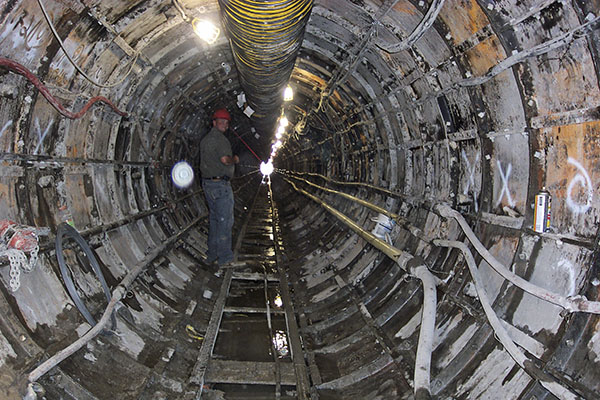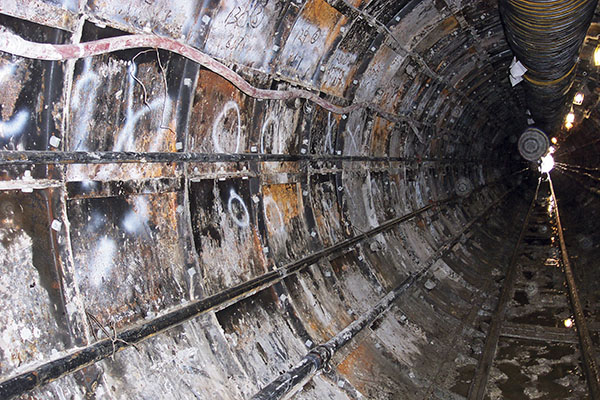

New service tunnel extended using steel liner plates and innovative grout pumps supplied by DSI Underground
The rapidly increasing number of passengers using Indianapolis’s International airport because of its convenient central location has made an expansion of its capacity necessary. In addition to a new tower, the "New Indianapolis Airport" also features an additional passenger terminal including parking spaces and a new roadway to Interstate 70. The expansion project is scheduled for completion in 2008.
Connection of the new passenger terminal to the existing supply lines posed quite a technical challenge, since a distance of about 1.8 km had to be covered, and one airstrip and several runways had to be crossed. As a result, a decision was made to build a 615 m long tunnel underneath the runways for the supply lines (water, power, communication). Since the airport had to continue to operate during the tunnelling work, while the tunnel was being built, it was vitally important that no settlements occur on the runways during construction work.
Due to the local geological conditions and the location of the tunnel below ground-water level, an earth pressure balance machine ("EPB TBM") was used to drive the tunnel. On the basis of a special proposal made by the engineers involved, the tunnel was lined with sealed, heavy steel liner plates manufactured by DSI Underground Systems Inc. instead of the customary concrete segments. For that purpose, the steel liner plates were additionally reinforced with steel braces prior to their installation.
Originally, the service tunnel was planned with a larger diameter to accommodate pedestrians. Due to a special proposal, however, the size of the tunnel was reduced and permanent ventilation and lighting were eliminated. Subsequently, the supply lines were fixed inside of the tunnel structure using aerated concrete. That special solution reduced the originally project costs by about one third.
The relatively small tunnel diameter of 2.60 m, however, rendered the injection of grout mortar to fill the spaces between the steel liner plates and the driven bottom wall very difficult.
However, DSI as the US distributor of Häny grouting systems knew an effective solution to that problem. Due to the small diameter of the tunnel, it was impossible to place the grout mixing and pumping equipment inside of the tunnel. Therefore, the grout had to be produced above ground and pumped over a distance of more than 600 m without exceeding the specified maximum pressure of 2.5 bar at the point of injection. To this end, retarding agents were added to the grout in the mixing machine. A progressive cavity pump with variable speed drive was linked directly into the hydraulic system of the grout pump to always keep the same grout/accelerator ratio at the point of injection, independent of the output of the grout pump.
At the point of injection, a sophisticated control and recording system keeps track of the pressures, flow rates and quantities and controls the pumping equipment on the surface. Thus, an optimum mixing ratio of the two part grout was ensured and the grout was equally spread around the steel liner plates. The recorded data can be transferred to a computer via memory card for subsequent evaluation.
So far, the new service tunnel at the Indianapolis airport is the longest tunnel driven with an EPB machine using steel liner plates. DSI is proud to have contributed to the successful construction of this technically challenging tunnel with its expertise.
